The Coronavirus pandemic has become analogous with death, fear and anxiety. The lockdown has transformed our chaotic, jubilant and noisy world into an empty and desolate wasteland, changing people’s lives completely and perhaps forever. In this global crisis, artists are responding by using different signs and symbols in art to raise awareness of the disease. However, it seems that Covid-19 has found a novel means of expression in the work of the Bangladeshi artistic community.
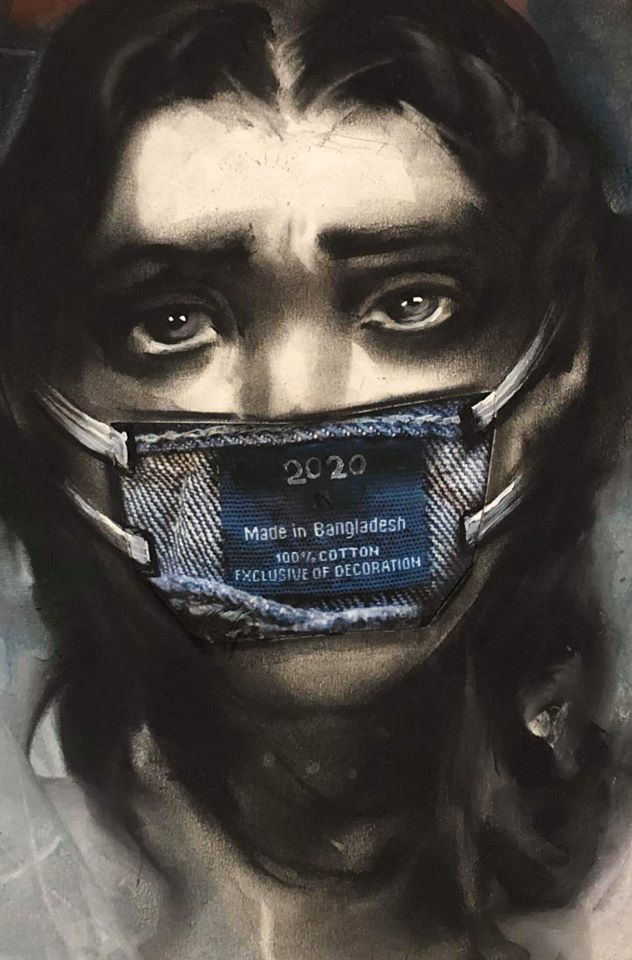
Farahana Yasmin’s Rolling of Death series encapsulates the pain and suffering of patients with Covid-19 being forced to rely on ventilators. The ventilator tube, with the conspicuous and obviously symbolic shape of a twisting serpent, gives an impression that it is constricting instead of helping the patient to breathe. A predominance of black emphasises an atmosphere of gloom. Dark shadows around the eyes emphasize respiratory distress and general ill-health, while the smoky effect and the dark colour tones in her artwork denote pollutants spilling from factories and industrial installations. The colours used do not give an impression of a sterile hospital environment, but instead emphasise a claustrophobic atmosphere in which the woman is struggling to breathe in smoke from a fire, metaphorically signifying the harmful chemicals in factory smoke, linking the disease with capitalist oppression. Yasmin portrays Coronavirus as nature’s revenge, showing how nature is getting its own back on the rich. The smoke from the factories has harmed our natural environment, bringing crises such as global warming and rising sea levels. Climate change has a huge impact on the ecosystem. As global temperatures rise due to pollution, ecosystems began to change to cope with the increase in temperature, eventually driving species from their habitats, leading to mass extinctions. The woman on the ventilator in Yasmin’s work signifies how she sees Coronavirus as causing respiratory failure for the world, depicting it as a symbol of pollution and environmental destruction and as a symbol of the collapse of the world order. Factory smoke brings drastic changes to our ecosystems and the Coronavirus pandemic is leading to the large-scale shutdown of economic activities, threatening the global capitalist system. Meanwhile, a smaller-scale shutdown of the systems in our bodies that bring us oxygen and life is also taking place. It is not hard to see how Yasmin’s work is a metaphor for life as individual and corporate entities.
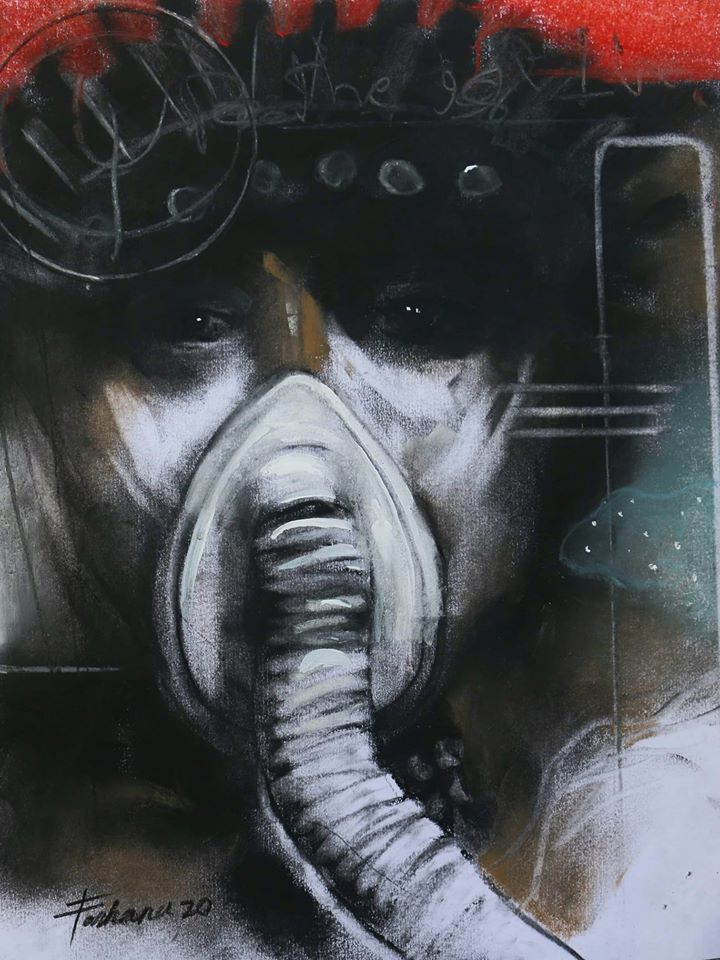
Yasmin not only projects the distress of the capitalists in a global crisis, but also unveils through her masked figures the hypocrisy and deceptiveness of human nature. The facemask has become an essential part of people’s lives since the outbreak of the illness, and fashion designers are now making their own masks as fashion accessories to protect against infection, transforming the appearance of human beings by hiding their faces. Masks are synonymous with deception, fraud and hypocrisy. People hide their true identities and real intentions behind actual or metaphorical masks to achieve their ulterior motives, which may harm others. Coronavirus emphasises the deceptive nature of human beings, with people now hiding in plain sight behind their masks as the masks become an indispensable aspect of our appearance.
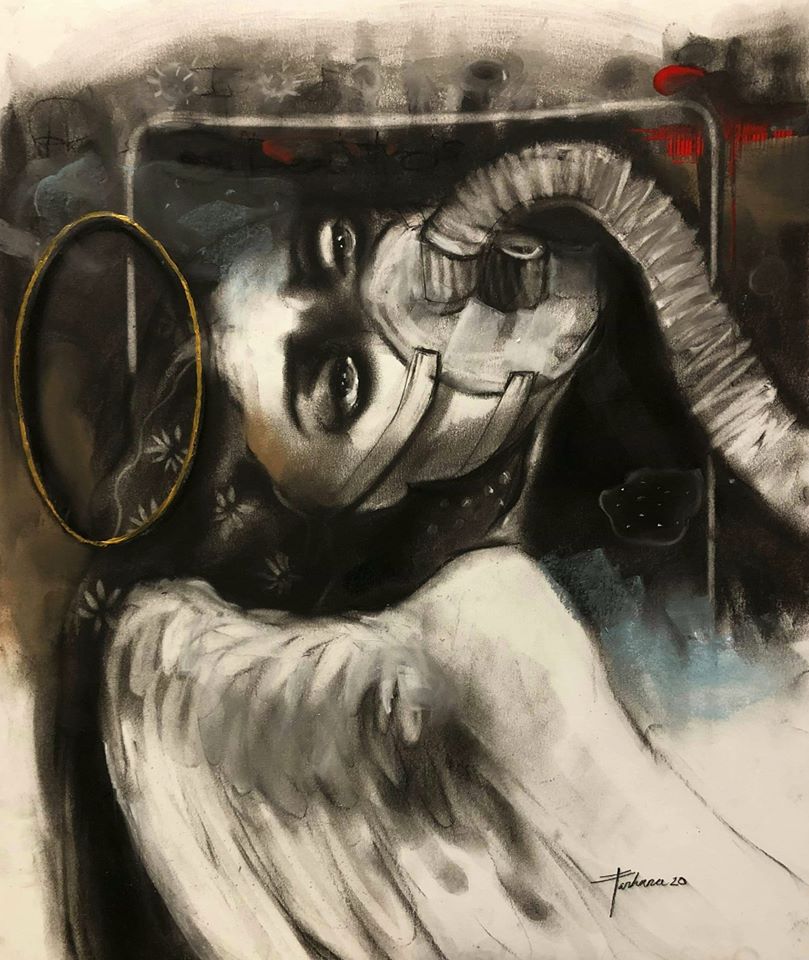
Coronavirus not only threatens the world’s financial and industrial systems, it also brings our human vices into the open, challenging the unbroken supremacy of the patriarchal system. We’re all stuck inside, impotent and helpless. We have been reduced to equals.
Karu Titus’s Gorer modhe manush depicts men stuck indoors during the coronavirus lockdown, struggling to get outside and find life. Historically, men do their work in the public sphere, while women were expected to remain at home in the private sphere. Feminists claim that gender roles are natural but socially constructed, and the patriarchy makes use of gender-based differences to maintain inequalities between men and women. But the recent lockdown has domesticated men, confining them to the woman’s sphere. It seems that Muslim feminist writer Begum Rokeya Shakhawat Hossain’s book Sultana’s Dream has become a reality in an age in which men have been secluded within the four walls of the home, away from the technological advances of society that they are so used to controlling. Although the coronavirus lockdown has plunged people into isolation, it has at least played its part in undermining the patriarchal system – if only temporarily and symbolically. Whether we can learn a longer-term lesson from this remains to be seen.
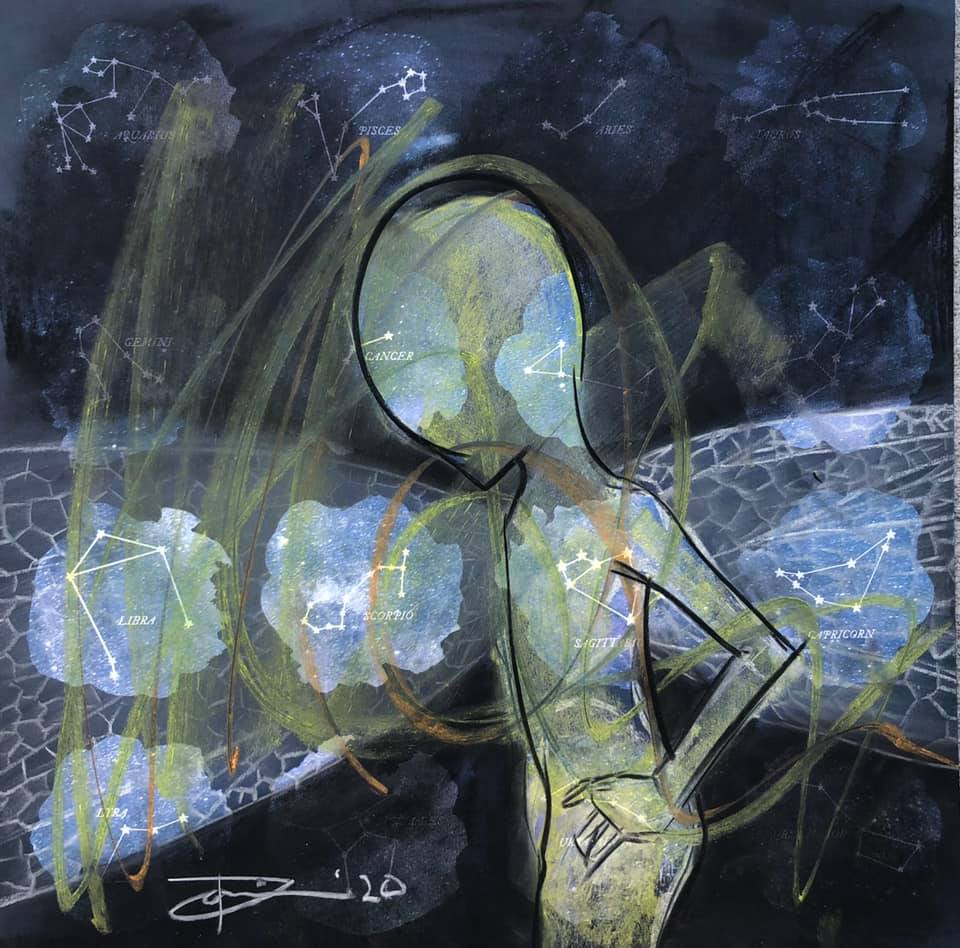
Tariq Julfiker’s Beautiful soul of a dead city encapsulates the essence of loneliness. He depicts the pain of exclusion through the portrayal of a simplified human form, highlighted as a black outline from which all features have been expunged. The empty spaces surrounding the figure are devoid of the usual glamour and bustle of the industrialized city, giving us a vision of Enlightenment thinker Rousseau’s back-to-nature philosophy, in which he envisioned a primitive society devoid of scientific advancement, given that cultural and intellectual progress leads to moral decadence and corruption. The downcast posture of the head reflects the frustration of boredom, of not being able to participate in social gatherings and indulge in the materialistic pleasures of the outside world. The wings on the human figure look conspicuous, demonstrating that the lockdown has shackled the man’s freedom, bringing life as we know it to a halt.
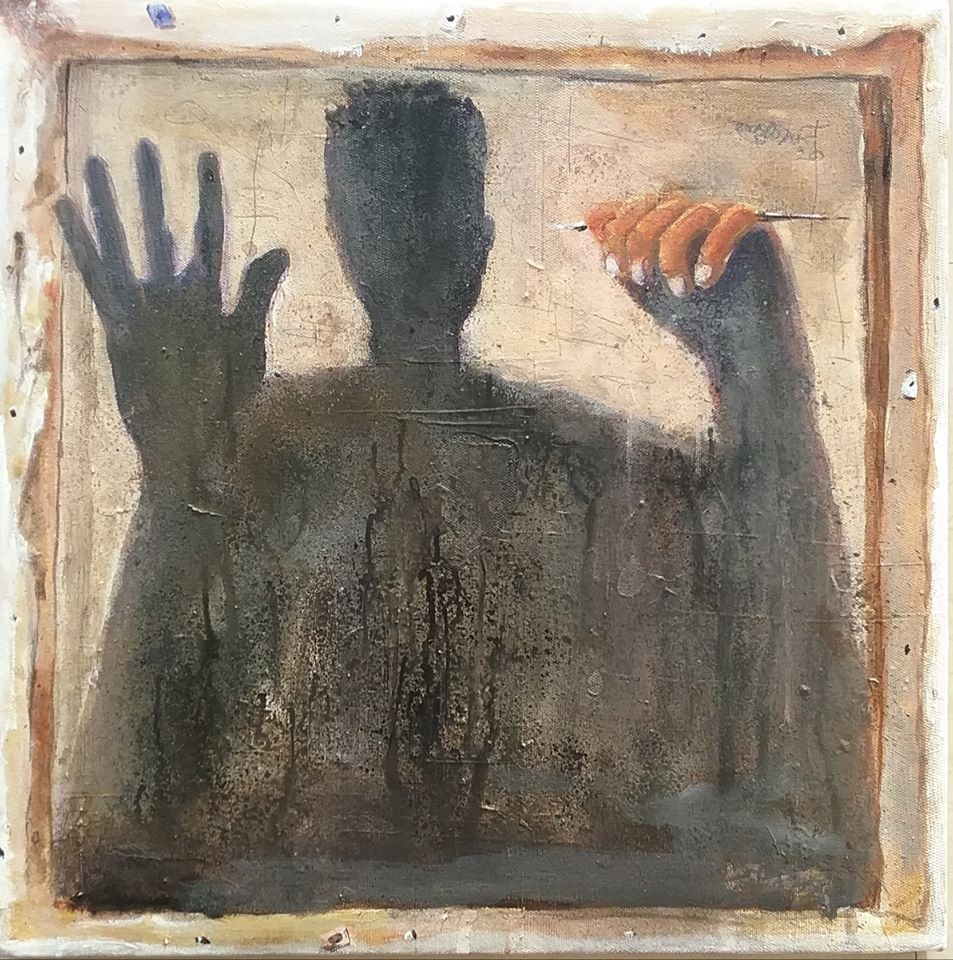
Deists in the Enlightenment believed that God existed and had created the world, but chose not to interfere with His creation, like a clockmaker who creates a clock, winds it up, and leaves it to run. But now it seems that the outpouring of human sin has forced God to intervene and stop the clock, bringing our lives to a standstill in a way no one ever envisioned.
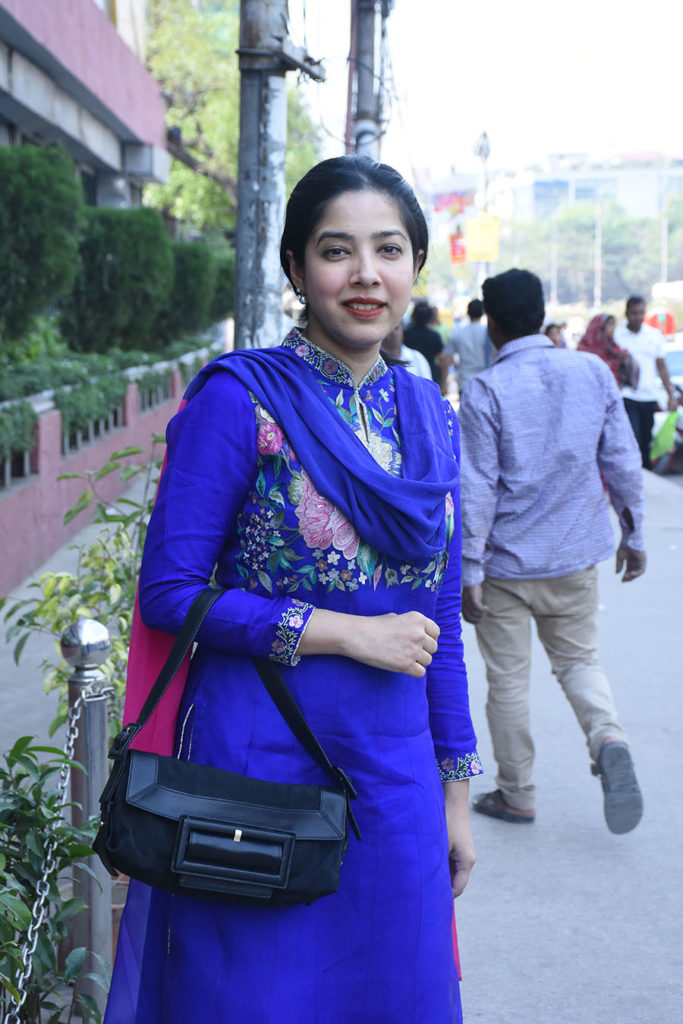
The Coronavirus epidemic as a global issue does not overpower the viewer with preconceived notions of depression, and has been given novel expression through the work of these artists. Farhana Yasmin has metaphorically represented the difficulties faced by the neoliberal world order in her depiction of women engulfed in smoke, being strangled by the tubes that purport to save them. The facemasks in her work demonstrate the vices people hide behind in real life to conceal their true natures and intentions. Karu Titus dismantles gender hierarchies by confining men to the home and giving them traditional female roles, while Tariq Julfiker associates the Coronavirus lockdown with the primitive society envisioned by enlightened thinkers. In these examples, art does not serve a didactic purpose by making people aware of the dreadful virus. Instead the visual ambiguity delights the senses and encourages us to discover new facets of the pandemic revealed through art.




